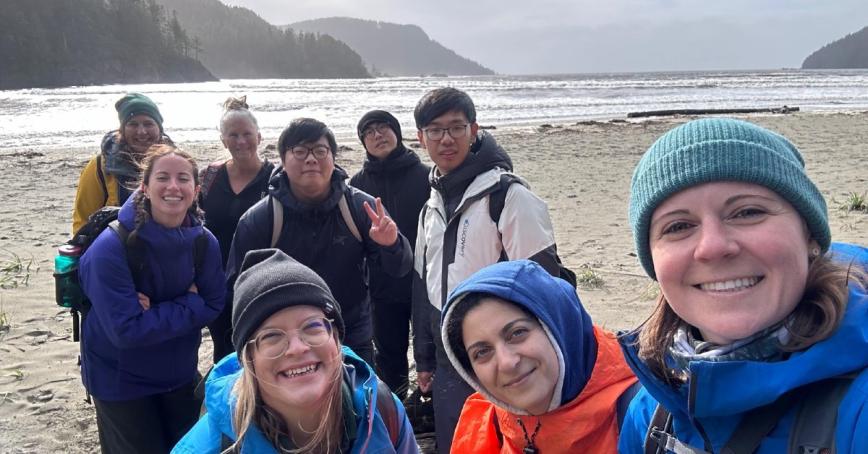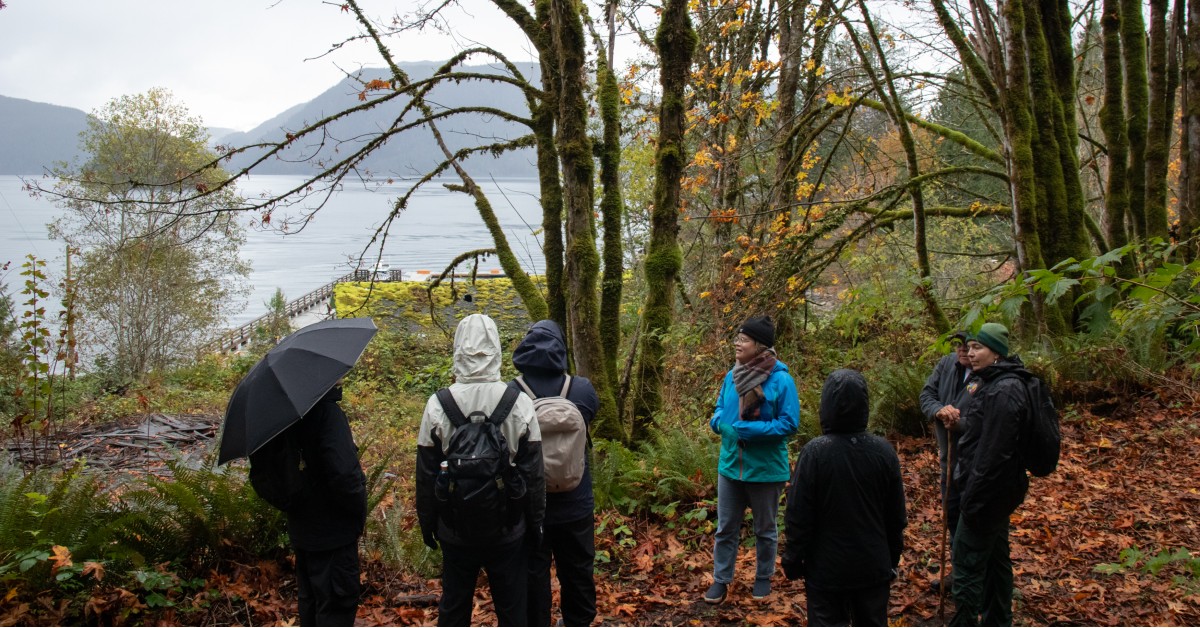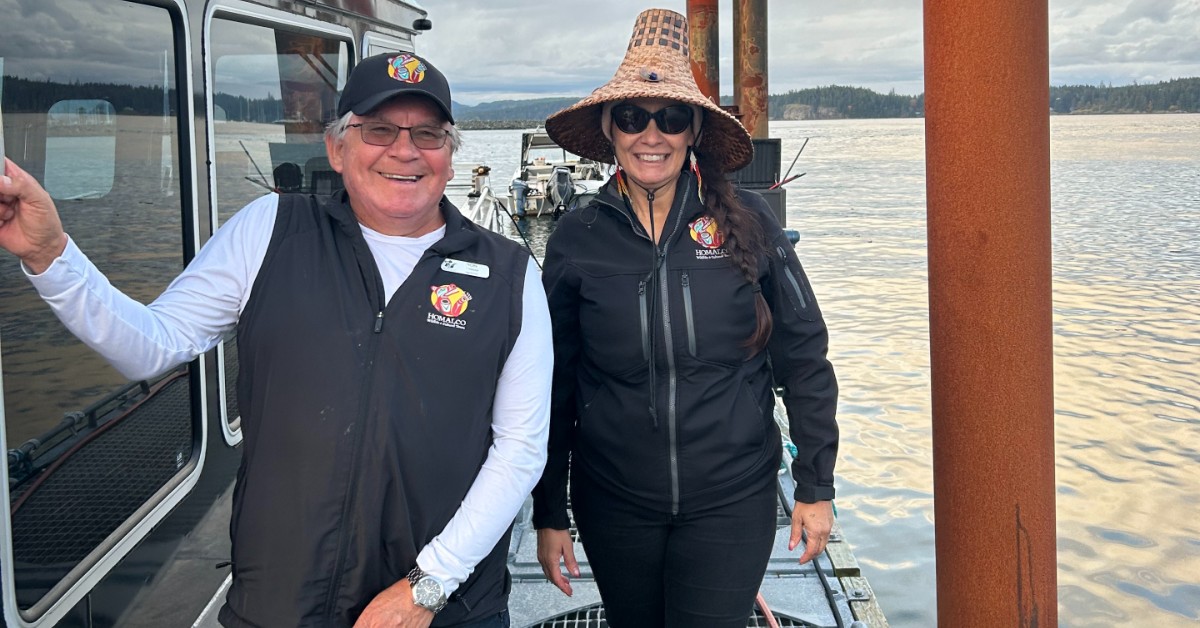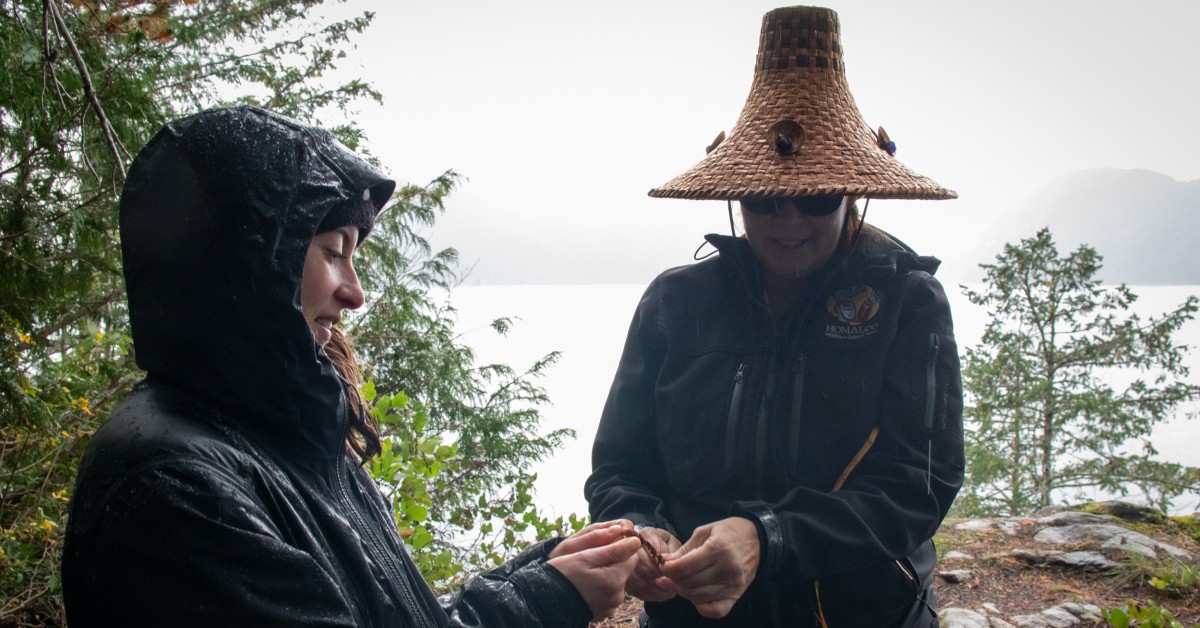Field school shines spotlight on regenerative tourism
Topics
Featured
Share online

Learn more about the Master of Arts in Tourism Management.
In Fall 2024, five Royal Roads University Master of Arts in Tourism Management students, and three faculty members headed out on an immersive field school experience to explore north Vancouver Island. This field school was the first of its kind at Royal Roads, which leveraged student input from previous field schools to inform everything from assignments to values to logistics. The new offering aimed to explore themes and practical applications of regenerative tourism, cultural education and experiential learning.
The five-night field school “started in Nanaimo, and we travelled up to Campbell River, to Alert Bay, and then to Port Hardy,” Pam McGarel, associate faculty and tour leader, explains. McGarel has a Masters of Science in International Development and Sustainable Tourism and is the founder of Mosaic Earth Travel.

Mosaic Earth Travel specializes in immersive and educational small group tours that are “off the beaten path,” including northern Vancouver Island.
“I based this trip on Mosaic Earth’s classic tours to the north Island that are rooted in immersive educational experiences, combining wildlife viewing and Indigenous cultural immersion. I then adapted it to the curriculum and the learning outcomes that we had for the students,” McGarel mentions. “It became a really neat hybrid, mixing typical tour activities with more of an in-depth behind-the-scenes look at the business and concepts of regenerative tourism.”
“We had three weeks of class time before we went into the field,” McGarel adds, “where we started analyzing the concepts of sustainable tourism, eco-tourism, and regenerative tourism… dissecting what these terms mean in practice.”

In simple terms, regenerative tourism is a holistic, living-systems approach that goes beyond sustainability and minimizing harm to now actively working to improve the environment and communities we visit.
“What's really important at this level of education is getting into the field and seeing these theories in action, and being able to reflect, make connections, and build practical understanding,” McGarel explains.
Chris Cheung, a MATM student who participated in the unique field school experience agrees.

“During the trip…[we] engaged with different stakeholders within the industries, and I believe it was a good chance for us to know more about regenerative tourism,” he says.“I think it's a good chance for us to reflect on how tourism should be defined…tourism should be more than sightseeing.”
One of the most memorable experiences from the field school for both Cheung and McGarel was a boat tour from Campbell River led by Homalco Wildlife & Cultural Tours, with two Indigenous guides, Ron and Janet.

“They brought us to a village that was…their home decades before, but now the village has been abandoned,” Cheung says. Cheung is from Hong Kong, adding that this was his first experience learning about Indigenous culture outside of books, journals, and school. “The tour guide was born there…and he has shared a lot of his childhood stories with us.”
“My favourite moment [of the tour] was when we walked to this lookout,” McGarel adds. “It had been raining all day. We're in the forest, looking out over the ocean, surrounded by these big, beautiful trees, and then Janet taught us how to weave with cedar.

“It was a really neat mix of that nature experience, being outside, while creating something and learning about the culture at the same time.”
Overall, this field school was a way to forge connections and experience real-life examples of regenerative tourism.
“The students went from looking at the theory to now seeing the broader picture, all the different stakeholders that are involved and each of our roles in creating a better future for our planet and communities,” McGarel explains. “It was a more rewarding experience than I could have hoped for.”

Photo credit: Pam McGarel, Mosaic Earth Travel.
Learn more about the Master of Arts in Tourism Management.